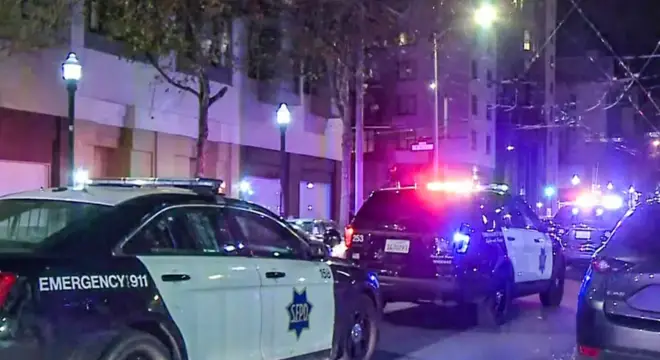San Leandro Home Invasion: Simple Upgrades to Prevent What Happened
I’ll be honest with you—this story hit me hard.
Imagine sitting in your living room one night, thinking you’re safe in your own home… and then you’re dodging bullets from armed intruders. That’s exactly what happened to a San Leandro homeowner earlier this week. A quiet neighborhood, a regular family evening—turned into a crime scene in seconds.
This wasn’t a random hit. According to local police, the robbery was targeted. The suspects came prepared. Multiple men stormed into the house. There was a shootout. The homeowner got shot. The suspects ran—but not for long.
Thankfully, the police moved fast. Several arrests have already been made. But what does this say about safety in our homes? And what should you take away from it—especially if you live in California, where crime like this isn’t as rare as we’d like to believe?
This story isn’t just about one house in San Leandro. It’s about all of us.
Chronology of Events: What Happened During the Home Invasion
It started like any other evening in San Leandro. But within moments, everything changed.
Police say multiple armed suspects forced their way into a home near Woodland Avenue. It wasn’t random. This was a planned home invasion—targeted, not opportunistic. The homeowner confronted them, and a gunfight broke out inside the house.
Yes, inside his own house.
According to KRON4 and Patch, the homeowner was shot but survived. Police haven’t released his name, but he was rushed to the hospital with serious injuries.
The suspects fled. But thanks to neighborhood surveillance, license plate tracking, and quick police coordination, four of them were arrested soon after—some reportedly just blocks away.
Officials say the suspects knew exactly what they were doing. This wasn’t a burglary gone wrong—it was a home invasion with intent, possibly targeting something or someone specific inside that house.
This isn’t just a crime report. It’s a clear signal that targeted home invasions are real—and they’re happening in our communities, not just on the news.
The Victim: Homeowner’s Condition and Recovery
When you hear someone got shot in their own home, it hits different. This wasn’t a police chase or some gang-related shootout on the street. This was a man defending his home—his family, his life.
Police haven’t released his name publicly, likely out of respect and safety. But what we do know is that he was shot during the gunfire exchange and taken to the hospital in serious condition. According to CBS Bay Area’s early report, the injuries were not fatal.
No other family members were reported injured, which, honestly, feels like a miracle.
There’s no photo of him, no interview. Just silence—which often says more than words. This man fought back. He took a bullet inside his own house trying to stand his ground. And now, while the news cycle moves on, he’s probably recovering from wounds—both physical and mental—that no camera sees.
If you’ve ever thought, “I’d fight back too,” remember—this is what that fight can look like. It’s not heroic music. It’s trauma, recovery, and a long road forward.
The Perpetrators: Who Are the Suspects?

Now let’s talk about the people behind this chaos.
San Leandro police confirmed they arrested four suspects shortly after the incident. Two were minors. Two were adults, one of them identified as an Oakland resident with a criminal history tied to burglary and weapons.
KRON4 reported that the suspects were caught using real-time surveillance coordination and neighborhood witness accounts. License plate data helped track them down as they tried to escape.
Police believe the suspects knew the layout of the house and possibly had inside information. That’s important—it changes the entire context from “random crime” to “targeted attack.” In plain terms: this wasn’t a chance robbery. These guys came prepared.
The legal process is still unfolding. But if the charges hold—armed robbery, attempted murder, conspiracy—it’s clear these weren’t just troubled teens making a bad decision. This was coordinated, dangerous, and criminal at the highest level.
Law Enforcement’s Response: Investigation and Apprehension
Here’s where things turned fast.
San Leandro police didn’t just respond—they acted with speed and strategy. According to Patch, officers arrived within minutes after multiple 911 calls. The area was cordoned off. Witnesses gave descriptions. But what really made the difference? Technology.
Surveillance cameras from nearby homes helped trace the suspects’ escape route. Plate readers identified the getaway vehicle. And before the night ended, four people were in custody. No long manhunt. No “suspects at large” anxiety dragging out for days.
That kind of response builds trust.
San Leandro PD even issued a public update the next morning—transparent, direct, and backed with evidence. They didn’t just say “we caught them.” They laid out how. That’s the kind of communication people need after something this traumatic hits their neighborhood.
The quick arrests didn’t just bring justice—they brought calm. That’s what solid policing looks like in real time.
In a similar case, North Carolina homeowners shot an intruder who broke in wielding an axe, highlighting how fast a quiet night can turn deadly.
Community Impact: Reactions and Safety Concerns
Now let’s talk about what happened after the headlines.
Because when gunfire hits a quiet street, the whole block feels it.
Local residents on Reddit and in San Leandro Facebook groups said they heard the sirens, saw the street shut down, and started texting neighbors immediately. Many posted things like, “This could’ve been us,” and “Time to upgrade our security systems.”
And honestly, who can blame them?
In a community already seeing a rise in property crimes, this felt like a line being crossed. A robbery is one thing. A shootout inside a home? That’s another level—and it shook people. Several neighbors reportedly organized small community safety meetings in the days that followed. Others asked for more visible patrols in the area.
This is the kind of crime that lingers. Even after arrests are made, people start questioning:
Is my door strong enough?
Do I need a camera system?
Could this happen to my family too?
The fear is real—but so is the opportunity to prepare smarter, talk with neighbors, and not wait until it’s your name in the news.
Expert Opinions: Preventing Home Invasions

Let’s be real—after reading something like this, your first instinct is, “How do I protect my home?”
I spoke with a former Bay Area police officer (now a private security consultant), and his answer was blunt:
“Most homes are soft targets. Criminals know it. Your job is to make breaking in harder, noisier, and riskier.”
Here’s what pros recommend—simple, practical steps that don’t break the bank:
- Motion-activated cameras at entry points.
- Solid-core doors and deadbolt locks (not hollow ones).
- Alarm systems that actually call you or dispatch.
- Outdoor lighting with timers or motion sensors.
- Neighborhood watch apps like Nextdoor or Citizen.
Another key point? Don’t keep quiet about suspicious activity. A lot of home invasions get preceded by scouting—guys pretending to be utility workers or Amazon drivers. If something feels off, it probably is.
If you’re reading this and haven’t had that conversation with your family yet, now’s the time. Prevention starts with awareness.
Statistical Context: Home Invasions in California
This wasn’t an isolated case—and the data backs that up.
According to the California Department of Justice, burglary and residential robbery cases rose by nearly 7% statewide last year. In urban areas like San Leandro, Oakland, and parts of LA, targeted home invasions are becoming disturbingly common.
Let’s break down a few quick stats:
- In Alameda County, over 3,400 burglaries were reported in 2023.
- About 30% of those involved forced entry into occupied homes.
- The San Leandro PD’s crime map shows a spike in nighttime break-ins over the last 6 months.
These aren’t just statistics—they’re a trend. And if you think your quiet neighborhood makes you immune, so did this homeowner. Until it didn’t.
There’s also another angle here: social media oversharing. Law enforcement across the state has warned that people often become targets after posting travel plans, shopping hauls, or lifestyle content publicly.
The numbers don’t lie. California is seeing more bold, planned home invasions—and this one in San Leandro is just the latest proof.
Conclusion
This wasn’t just a crime story—it was a reminder of how fast everything can flip.
One moment, a man’s relaxing at home. The next, he’s in the hospital with a bullet wound and a house full of shattered glass. Four suspects are in custody, yes—but that doesn’t undo what happened.
So what now?
If you’re reading this, don’t just scroll past. Think about what this means for your own life.
Do you know how secure your home really is?
Do your kids know what to do if someone tries to break in?
Have you talked to your neighbors about what you’d do together?
These aren’t questions to ask after something goes wrong. They’re the questions that might stop it from happening in the first place.
San Leandro isn’t some high-crime war zone. It’s a regular place with regular people—and that’s exactly why this story matters. Because if it can happen there, it can happen anywhere.
What would you do if something like this happened on your street?
Let’s talk in the comments. Because awareness only works when we share it.
Disclaimer: This article is based on currently available public reports and police statements. Details may change as the investigation develops. For official updates, always refer to law enforcement sources.


